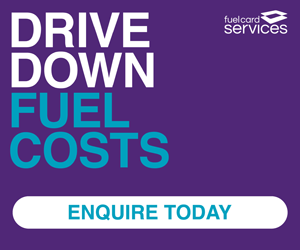National Highways is launching a major new driver awareness campaign calling on motorists to plan their summer journeys ahead of one of the busiest times of the year for vehicle breakdowns.
In July and August 2022, National Highways traffic officer patrols dealt with more than 21,000 breakdowns on motorways, with August seeing the highest number of breakdowns in the year.
More than a third (34%) of vehicle breakdowns during these two months were caused by tyre problems, vehicles running out of fuel, loss of power and engine issues.
Meanwhile, data shows that almost one out of four (23%) people agree checking tyre pressure is important but don’t know how to do it.
With millions expected to head off on their travels over the coming weeks, National Highways is calling on drivers to make sure they have a safe T.R.I.P this summer by using its new journey planning checklist.
National Highways says following the checklist will help to prevent vehicle breakdowns and reduce the number of collisions caused by fatigue.
The new T.R.I.P checklist is based on four key principles which are:
- Top–up. Fuel, oil and screen wash.
- Rest. Take a rest break every two hours.
- Inspect. Check tyre pressure and tread.
- Prepare. Have a plan for all weather conditions.
National Highways, which is responsible for running England’s motorways and major A road network, says motorists should also factor in regular rest stops on their summer journeys. It is recommended to take a minimum break of at least 15 minutes every two hours to ward off the effects of fatigue.
National Highways traffic officer Kelly Rudge patrols some of the busiest motorways in the country including the M6 and M42 in the Midlands. She said: “We are gearing up for a busy summer on England’s motorway and major A-road network and it’s really important that everyone does their bit to help keep traffic flowing by making sure their vehicle is ready for the journey.
“To help keep people moving, it’s important that motorists familiarise themselves with our new T.R.I.P checklist before setting off on their summer journeys. Across the country my colleagues and I dealt with more than 21,000 vehicle breakdowns on motorways in July and August last year, so we’d urge motorists to make sure they have plenty of fuel and oil for their journey as well as checking all the tyres are in good condition.
“Drivers should also plan regular rest stops every two hours because collisions involving fatigue are most common over the months of July and August.
“It’s also a good idea to make sure you have plenty of fluids in the vehicle in case of unexpected delays as well as sensible clothing like a rain jacket in case the weather changes.”
To help keep people safe and traffic flowing, National Highways traffic officers will be on patrol on the network and are often first on the scene in an incident. Their priorities are to keep people safe and fully reopen the road as soon as possible.
They stop traffic to clear obstructions and spills, help remove broken-down vehicles, and support the police and other emergency services by managing road closures when there’s a serious incident.
Like all National Highways traffic officers, Kelly works hand-in-hand with operators in regional control centres to support colleagues out on the network.
Whether on the scene or behind the scenes, traffic officers are there to help keep the traffic flowing and help people to reach their destination safely.
For more information on the T.R.I.P vehicle checklist head online to
Tips for motorway driving:
- never drive in a lane closed by a Red X
- keep to the speed limits shown on the gantries or signs
- a hard shoulder is always identified by a solid white unbroken line – if there’s no speed limit displayed above it or a Red X is displayed, do not use it except in emergency
- a broken white line indicates a normal running lane
- if the hard shoulder is being used as an extra lane, use the designated emergency areas for emergencies
- if your vehicle experiences difficulties, eg warning light, exit the motorway as soon as possible, if you can safely do so
- most breakdowns are preventable – keep your car well maintained, check your tyres and make sure you have enough fuel for your journey. Don’t stop except in an emergency. If you have to stop make sure you know what to do
Please visit our web page for more information about driving on motorways.
Additional information:
- Motorists driving in hot weather this summer are being urged to prepare a seasonal kit to help them and their passengers in the event of delays
- The top advice from National Highways is to take plenty of drinking water with you – enough for you and your passengers, as well as food that won’t be affected by the heat
- Other ideas include packing sunblock, sunglasses (except category four), hats and a mobile phone charger to help in case of breakdowns. If you take medication, it is worth having a supply with you if needed
- You should also check the Met Office weather forecast for your route and destination
- Almost one out of four (23%) people agree checking tyre pressure is important but don’t know how to do it. (Source: ICM Tyre Checks Campaign Evaluation, 1,000 respondents)
- Collisions involving fatigue are most common over the months of July and August (Source STATS19). Approximately 1 in 15 crashes involve fatigue.







